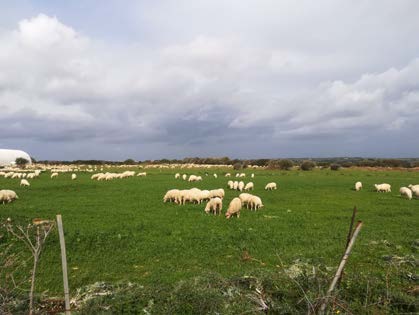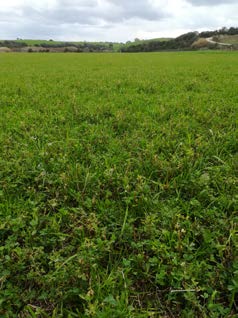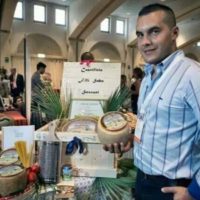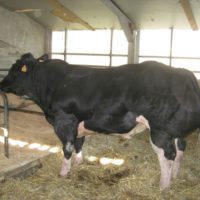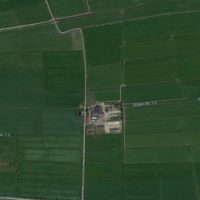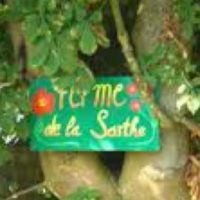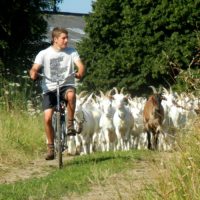Improving dairy sheep farm economic efficiency by organic fertilisation, using conservative soil tillage and producing and directly selling cheese
Farm: “Fratelli Saba”
Location: Saccheddu (Sardinia), Italy
Case study
 Improving dairy sheep farm economic efficiency by organic fertilisation, using conservative soil tillage and producing and directly selling cheese (.pdf)
Improving dairy sheep farm economic efficiency by organic fertilisation, using conservative soil tillage and producing and directly selling cheese (.pdf)
Description
Background
The farm ‘Fratelli Saba’ belongs to the Saba family from decades. Their grandfather cultivated annual forage crops, vegetables and grain legumes that he sold in the national market together and produced a special cheese (‘casu batteria’), to be eaten with fresh faba beans. He bought the first milking machine of the farm in 1968. After the retirement of their grandfather, the farm management was entrusted to a sharecropper. The on-farm cheese making was stopped and milk was sold to dairy industries. In 2004, the Saba brothers signed the agreement of a loan for use with their father and started to manage the farm by themselves. They soon realized that the income obtained by milk selling was not high enough to cover their innovation needs and external manpower. The young brothers decided to start to produce cheese on farm and to increase forage production and the agronomic efficiency of management. Until that moment, annual forage crops were prevailingly cultivated in the farm. Ploughing was performed every year, nearly in most of the farm surface.
Detailed description
The farmers looked for strategies that aimed both at reducing production costs and at stabilizing income. In fact, they aimed at innovating farm structures and machinery and needed to rely on a reliable annual income to amortize costs among years. Currently, the flock management relies on pastures, which cover 130 ha out 180 ha of the farm. The rest of the farm is cultivated with cereals for grain production (30 ha) to feed sheep, permanent crops (olive orchard) and permanent grasses to produce roll-out grass lawn. Grazing takes place also under olive trees.
In pastures, they use mixtures based on grasses and cereals composed by L. multiflorum (30-35%%), oat (20%), barley (20%), triticale (20%), rye (5%), in annual rotation with mixtures based on clovers, i.e. T. squarrosum, T. alexandrinum, T. incarnatum (90%) and 10% of seeds of L. multiflorum. Other pastures are based on a mixture of cichory (70%) and T. alexandrinum (30%). Finally, lucerne monoculture is cultivated to produce hay, which yield is sufficient to meet all diet requirements of sheep within the year.
Plough is no more carried out, in fact minimum tillage is usually carried out. This allowed farmers to improve soil conditions, reduce soil erosion, and save fuel to reduce costs. A further reduction of costs come from the adoption of organic fertilization, with the use of civil sewage sludge. This practice is carried out under the control of a public administration, which has in charge the soil analyses before the fertilisation, the chemical and microbiological analysis of sewage sludge, the calculation of the proper amounts to be distributed, its distribution in soils and its incorporation into soil, at least in the first year. In average, 80 kg of nitrogen and 16 kg of phosphorous per year are incorporated into the soil. The operation has no cost for the farmer, except for the incorporation of the proper amounts of sewage sludge in the following two years. In lucerne stands, sod-seeding is carried out at the beginning of autumn with Italian ryegrass, when lucerne is already dormant. In this way, Italian ryegrass can take advantage of the nitrogen fixation from lucerne and fresh pastures are available early, allowing soil cover in winter. At the same time, the lucerne production for haymaking is not influenced by Italian ryegrass crop. The management of pastures follows a rotational scheme, and sheep graze for few days (2-4) in each paddock. Pastures are divided into 30 or more paddocks, ranging from 2 to 17 ha, used for lactating ewes.
Grazing is time-managed: ewes graze for about two hours per day, and then concentrates and integrators meet the rest of their diet requirements. The flock consists of 1270 heads, of which 1000 are lactating sheep. Milk production ranges between 240,000 and 270,000 l per year. It is entirely processed on farm. To maximize milk production, at the end of the colostrum production, lambs are artificially fed with powdered milk. Dairy products are seasoned cheese (4-5 types, depending on the season) and ricotta cheese. Farmers sell their products following the farm-to-fork approach in their own shop in the nearby town and in fairs and local street markets.
Results
The farmers needed to recruit workforce for the management of farm activities (4 full time workers), among them a specialized cheesemaker, and to invest money to improve farm buildings and machinery, but they are repaid by the market success of their products and the increased farm income. Currently, they receive more requests for cheese than what is available. The high care of animal diet allow farmers to obtain a high quality milk and high cheese yield per liter. The continuous control of production cost is a winner strategy to improve their total revenue.
Adoption criteria
Innovations in this farm can be adopted by farmers who aims at having an income independent from market fluctuations of milk price. The measures adopted to reduce production costs are easily reproducible, especially the adoption of sod-seeding, the oversowing of Italian ryegrass on lucerne stands and the organic fertilisation.
Future prospects
The farmers thinks that further improvements of their farm can come only after improving their labour conditions. Currently, this is the most critical point concerning the farm management.
Additional information
| Farming system | conventional farming |
|---|---|
| Domains of innovation | animal feeding management, farm system, marketing, product processing |
| Main types of animal | dairy sheep |
| Country | Italy |
| Product type | Case study |
| Language | English |

